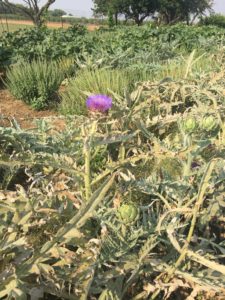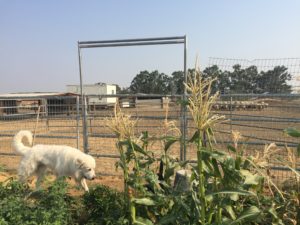My second and final week as an intern for the NRCS, Natural Resource Conservation Service, went by all too quickly. While the air quality in Davis was not ideal, about the equivalent of chain smoking cigars while standing outside, I had a wonderful, worthwhile week.
Monday was a relatively standard day at the office, curating the agencies social media and learning more about the roles of my coworkers. I also had the pleasure of meeting Christine, who was out on field work my first week.
On Tuesday, Christine and I had the opportunity to go to a round table/ meeting in Suisun, regarding female farmers in the area. Christine works mainly in outreach to underserved demographics in the agriculture industry, so attending to event was a no brainer for her. Female landowners and farmers are one of the quickest growing demographics in agriculture, making up about 30 percent of the industry in the US, and reaching up to 45 percent in states like Texas. These numbers are projected to reach about 50 percent in the next few years as land and businesses are past down, and women become more enticed to start themselves. The meeting was a great chance for me too learn about a demographic I had not taken much time to consider before. The impact of females in farming is way beyond what I had ever expected, and with increased opportunities in the field being available to women, hopefully we can continue to foster their success.

After another standard office day, I had the pleasure of spending Thursday in the Vacaville field office. During my day there, I was taken out by a biologist, Luke, to a small farm owned and run by a first generation Syrian migrant. He started his farm to bring the food from Syria to his mother in the US, and growing produce for their restaurant in San Francisco. This included eggplants and certain types of olives are usually specific to the country. To my embarrassment, it was during this trip that I learned how artichokes grow, something I had never really considered. I spent the day playing with his three sheep herding dogs, and learning about the environmental and financial sustainability of small farms.
In Vacaville, I was also taken by Petro, a Soil Conservationist, to a 150 acre almond orchard in the area. There, I learned about the entire almost life cycle. The first seven years of the trees life, they produce no fruit, meaning farmers make no profit for about 10 years of caring for the orchard. Once the trees produce fruit, they are left to dry and crack, exposing the nut. Then, a special machine is used to shake the trees and allow the nuts to fall, and continue to dry for about two more weeks in swept lines, before they are collected and sent to a manufacturer. Petro also taught me about the struggles of irrigating an orchard on such a large scale.
My final week in Davis was bittersweet. I am so grateful for my incredible host family, who made me feel so at home in only two weeks. I will also miss the fantastic people of the communications office, who filled my two weeks with so many laughs. This experience exposed me to so many fields I had never contemplated, such as agriculture and government work. While I am still pondering where I will end up in the next year, five, and ten, these two weeks will certainly guide me.

There are no comments published yet.